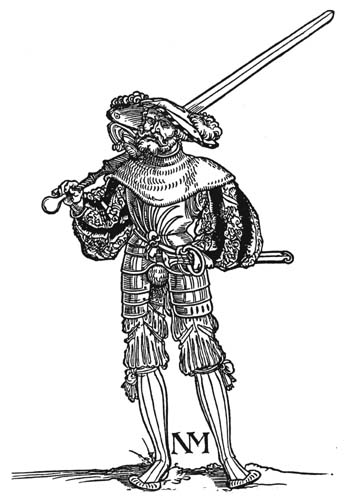Mr Curtis is a member of the ARMA Renaissance Martial Arts forum, and asks:
" What's with this obsession over angles of attack, really? I thought with proper edge alignment a sword's aerodynamic angle of attack should be virtually zero! "
Firstly it is not an obsession, it's an interest in the subject. Obsession is an ugly thing to be accused of. I am merely very interested. I must also add that it is my job as a designer to investigate these phenomenon, it's not just a hobby.
Secondly, we read that these large two handed sword were used at times to defend against many ( being designed to do so ) and were used in wide sweeping circular motions. Such motion must inevitably include curved cuts, turns, and other arcs rather than just absolutely straight cuts. Turning a blade in mid air means that the blade is necessarily presented at an angle of attack to the air flow. . . . it's not possible to turn a blade without doing so.
Now, the chord ratio of these blades ( as wings ) is very low, typically in the range of 3% to 6%. These low chord ratios mean that the blade will stall at very low angles of attack. Stalling is not ideal as it increases drag, slowing the blade and using more muscular energy. Stalling also drastically reduces lift.
The effect of drastically reduced lift due to a stall is that the blade will not 'steer' its way through a turn. If the blade does not stall the lift which it produces will tend to make it travel in the direction in which the edge is presented. If it stalls it will tend to continue on its path without turning properly flat first rather than edge first.. . . this tendency will have to be overcome by the swordsman using more muscular effort.
For wide sweeping arcs including changes in blade tip altitude and turns of various radii, the action of the swordsman in keeping the blade aligned to the airflow as much as possible will have the effect of making the blade follow the path in which it is directed better. It's a win/win situation as the edge direction tends to align the airflow and make the blade ( or wing )turn as directed.
That's unless the blade stalls, and just slews sideways while slowing down .
It is not possible to deny the fact that the kind of wide bladed swords we are talking about have significant aerodynamic properties at the speeds they can attain, or that they stall at very low angles of attack. Swords are not exempt from the laws of physics as we all know.
Blade undulations are able to increase the stall angle by 30 to 40%, that is a very significant improvement. The decrease in drag and the increase in lift are also helpful.





